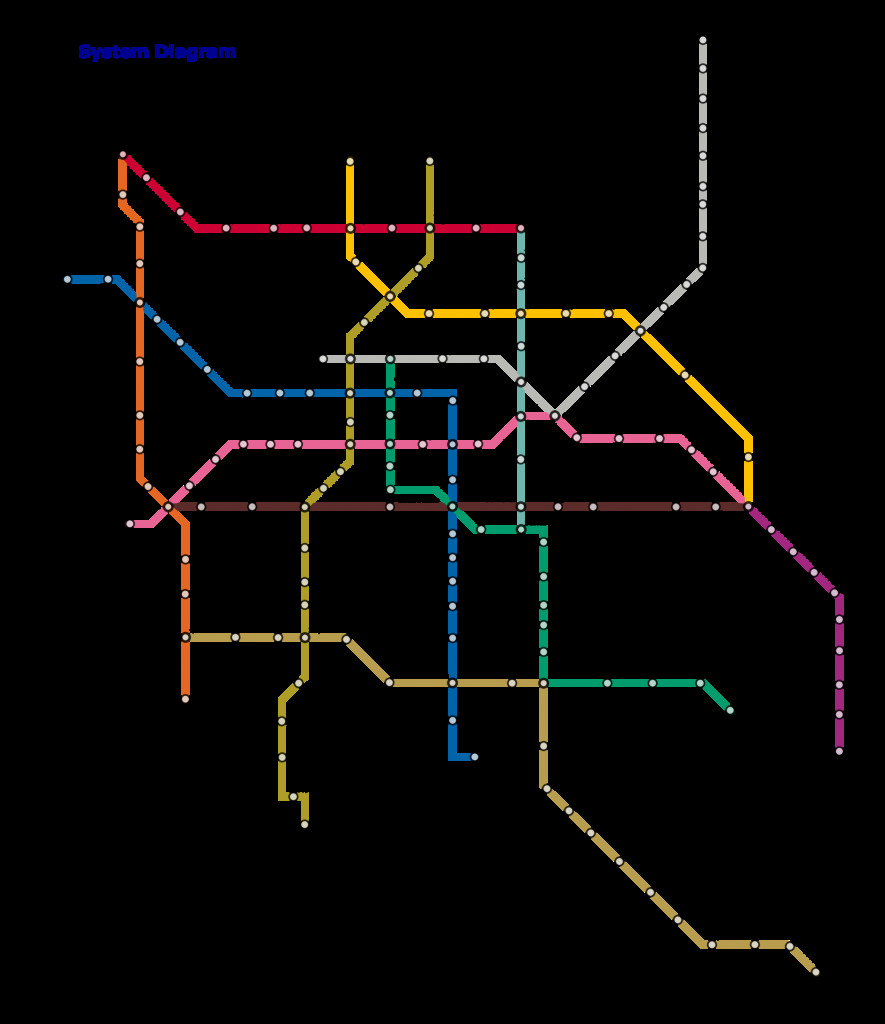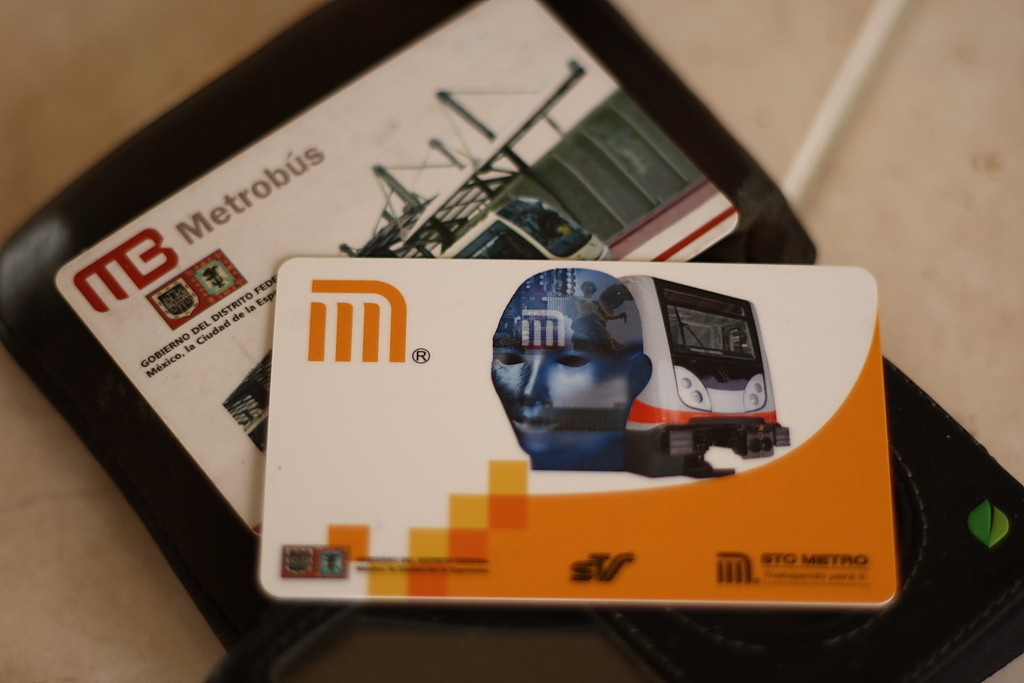Does Metro Work In Mexico? Yes, the Mexico City Metro is a vital and efficient transportation system, particularly in Mexico City, offering an affordable way to navigate the bustling metropolis, and on gaymexico.net, we provide all the information LGBTQ+ travelers need to confidently use this system. By understanding its operations, safety measures, and cultural nuances, you can experience Mexico City like a local.
1. Understanding the Mexico City Metro for LGBTQ+ Travelers
The Mexico City Metro, also known as “Sistema de Transporte Colectivo” (STC), is a rapid transit system serving the Mexico City metropolitan area. With 12 lines and 195 stations, it’s one of the largest metro systems in the world. For LGBTQ+ travelers, understanding how the metro works is essential for exploring the city safely and efficiently.
1.1. Key Features of the Mexico City Metro
- Affordability: One of the most significant advantages is its cost-effectiveness. A single journey costs only 5 pesos (approximately US$0.25), making it an economical choice for getting around.
- Extensive Coverage: The metro covers a large portion of the city, connecting major attractions, residential areas, and transportation hubs.
- Ease of Navigation: Each line is identified by a number and a color, and stations have unique logos, making it easy to navigate even if you don’t speak Spanish.
1.2. Why the Metro is Important for LGBTQ+ Tourists
- Accessibility to LGBTQ+ Hotspots: The metro provides easy access to popular LGBTQ+ neighborhoods like Zona Rosa, known for its gay bars, clubs, and LGBTQ+-friendly businesses.
- Safety in Numbers: Traveling on the metro, especially during peak hours, can offer a sense of security due to the presence of many people.
- Cultural Immersion: Riding the metro allows you to experience daily life in Mexico City, providing insights into the local culture and community.
2. Ticketing and Fares: A Gay Mexico Guide
Navigating the ticketing system can be straightforward once you understand the options available.
2.1. Types of Tickets
- Single Journey Ticket: A paper ticket valid for one ride on the metro.
- rechargeable Card (Tarjeta de Movilidad Integrada): A reusable card that can be loaded with credit and used on the metro, Metrobus, and other forms of public transport.
2.2. Purchasing Tickets and rechargebale Cards
- Ticket Windows (Taquillas): Located at every metro station, where you can buy single journey tickets or rechargeable cards.
- vending Machines: Available at some stations for recharging cards.
- Cash Only: Note that ticket windows and vending machines typically accept cash only, so be prepared with small denominations.
2.3. Fares and Recharge Options
- Single Journey: 5 pesos.
- rechargeable Card: The card itself costs 15 pesos, and you can add credit in multiples of 5 pesos.
2.4. Practical Tips for LGBTQ+ Travelers
- Buy a rechargeable Card: If you plan to use the metro frequently, a rechargeable card is more convenient than single journey tickets.
- Keep Your Card Safe: Treat your card like cash, as lost or stolen cards cannot be replaced.
- Check for Updates: Keep an eye out for announcements regarding fare changes or special promotions.
 Mexico City Metro Station Entrance
Mexico City Metro Station Entrance
Image: A diagram of the Mexico City Metro system, highlighting its extensive network and interconnected lines, providing essential navigation for travelers.
3. Navigating the Metro System: A Step-by-Step Guide
Understanding the layout and signage of the metro system is key to a smooth travel experience.
3.1. Identifying Lines and Stations
- Line Numbers and Colors: Each of the 12 metro lines is identified by a number (or letter) and a color. This makes it easy to follow the lines on maps and signage.
- Station Logos: Every station has a unique logo, often representing the station’s name or a nearby landmark. These logos are displayed prominently throughout the stations.
3.2. Reading Metro Maps
- Online and App Resources: The Mexico City Metro website and various mobile apps offer interactive maps that can help you plan your route.
- Station Maps: Large maps are displayed at most stations, showing the entire metro network and connecting lines.
3.3. Transferring Between Lines
- Transfer Stations (Correspondencias): These are stations where two or more lines intersect, allowing you to transfer from one line to another.
- Signage: Follow the color-coded signs to the correct platform for your connecting line.
- Long Transfers: Some transfer stations, like La Raza, have long walking distances between lines, so factor this into your travel time.
3.4. Practical Tips for LGBTQ+ Travelers
- Plan Your Route: Before entering the metro, use a map or app to plan your route and identify any necessary transfers.
- Look for Signage: Pay attention to the color-coded signs and station logos to ensure you’re heading in the right direction.
- Ask for Help: Don’t hesitate to ask metro staff or fellow passengers for directions if you’re unsure.
4. Metro Etiquette and Safety Tips for LGBTQ+ Individuals
Being aware of local customs and safety precautions can help ensure a pleasant and secure journey.
4.1. General Metro Etiquette
- Let Passengers Exit: Allow passengers to exit the train before attempting to board.
- Move to the Center: Move towards the center of the car to make room for others.
- Avoid Blocking Doors: Stand clear of the doors to allow for easy entry and exit.
- Refrain from Loud Conversations: Keep conversations to a reasonable volume, especially during peak hours.
4.2. Safety Precautions
- Be Aware of Your Surroundings: Keep an eye on your belongings and be aware of people around you.
- Secure Valuables: Keep wallets, phones, and other valuables in a secure pocket or bag.
- Avoid Traveling Alone Late at Night: If possible, avoid traveling alone on the metro late at night.
- Use Women-Only Cars: During peak hours, women-only cars are available on some lines.
4.3. LGBTQ+-Specific Safety Tips
- Be Discreet: While Mexico City is generally LGBTQ+-friendly, it’s advisable to be discreet with public displays of affection, especially in more conservative areas.
- Trust Your Instincts: If a situation feels uncomfortable or unsafe, remove yourself from the situation.
- Know Your Resources: Familiarize yourself with local LGBTQ+ organizations and resources in case you need assistance.
4.4. Practical Tips for LGBTQ+ Travelers
- Blend In: Try to blend in with the local culture and avoid drawing unnecessary attention to yourself.
- Travel in Groups: When possible, travel with friends or in groups for added safety.
- Report Incidents: If you experience or witness any harassment or discrimination, report it to the authorities.
5. Accessibility and Resources for LGBTQ+ Visitors
Knowing about accessibility features and available resources can make the metro more inclusive for everyone.
5.1. Accessibility Features
- Elevators and Ramps: Some stations have elevators and ramps for passengers with mobility issues, but not all stations are fully accessible.
- Priority Seating: Priority seating is available for elderly, pregnant, and disabled passengers.
- Assistance: Metro staff can provide assistance to passengers who need it.
5.2. Resources for LGBTQ+ Visitors
- LGBTQ+ Organizations: Several organizations in Mexico City offer support and resources for LGBTQ+ individuals.
- Tourist Information Centers: Tourist information centers can provide maps, directions, and other helpful information.
- Online Forums and Communities: Online forums and communities can offer insights and advice from fellow LGBTQ+ travelers.
5.3. Practical Tips for LGBTQ+ Travelers
- Plan Ahead: If you have mobility issues, research the accessibility features of the stations you plan to use.
- Contact LGBTQ+ Organizations: Reach out to local LGBTQ+ organizations for information and support.
- Use Online Resources: Utilize online forums and communities to get tips and advice from other LGBTQ+ travelers.
 Crowded Mexico City Metro Car
Crowded Mexico City Metro Car
Image: A crowded Mexico City Metro car, illustrating the typical conditions during peak hours, advising travelers to be prepared for close proximity and potential delays.
6. Exploring Mexico City’s LGBTQ+ Scene via the Metro
The metro provides convenient access to many of Mexico City’s LGBTQ+ hotspots.
6.1. Zona Rosa
- Nearest Metro Stations: Insurgentes (Line 1) and Cuauhtémoc (Line 1).
- Description: The heart of Mexico City’s LGBTQ+ scene, with numerous gay bars, clubs, restaurants, and shops.
6.2. Roma and Condesa
- Nearest Metro Stations: Insurgentes (Line 1), Sevilla (Line 1), and Chapultepec (Line 1).
- Description: Trendy neighborhoods with a mix of LGBTQ+-friendly cafes, bars, and cultural attractions.
6.3. Historic Center
- Nearest Metro Stations: Zócalo (Line 2), Bellas Artes (Line 2 and 8), and Allende (Line 2).
- Description: Home to historic landmarks, museums, and LGBTQ+-friendly establishments.
6.4. Practical Tips for LGBTQ+ Travelers
- Plan Your Itinerary: Use the metro to explore different LGBTQ+ neighborhoods and attractions.
- Check Event Listings: Look for LGBTQ+ events and parties happening during your visit.
- Support Local Businesses: Patronize LGBTQ+-owned and -friendly businesses to support the community.
7. Metro Hours and Frequency
Understanding the metro’s operating hours and frequency is essential for planning your trips.
7.1. Operating Hours
The Mexico City Metro has different operating hours depending on the day of the week:
- Weekdays (Monday to Friday): 5:00 AM to 12:00 AM (midnight)
- Saturdays: 6:00 AM to 12:00 AM (midnight)
- Sundays and Holidays: 7:00 AM to 12:00 AM (midnight)
These hours can vary slightly due to holidays or special events, so it’s always a good idea to check for any announcements or updates, especially if you plan to travel very early or late.
7.2. Train Frequency
During peak hours, trains typically arrive every 2 to 4 minutes. This frequency helps to manage the large volume of passengers and ensures that wait times are minimal. However, during off-peak hours, you might wait a bit longer, usually around 5 to 10 minutes. Keep in mind that frequency can be affected by unforeseen circumstances, such as maintenance or delays, so allow extra time if you have a tight schedule.
7.3. How This Affects LGBTQ+ Travelers
- Nightlife Planning: If you’re enjoying Mexico City’s vibrant nightlife, especially in areas like Zona Rosa, be mindful of the metro’s closing time. Plan your return trip accordingly, or consider alternative transportation options like Uber or taxis.
- Early Morning Travel: For those early morning flights or tours, remember that the metro starts later on weekends and holidays.
- Event Schedules: When attending LGBTQ+ events, check the event’s end time and ensure you can catch the metro back to your accommodation or next destination.
7.4. Tips for LGBTQ+ Travelers
- Check the Schedule: Always double-check the metro schedule, especially if you’re traveling on a Sunday or holiday.
- Plan for Delays: During peak hours or special events, the metro can get very crowded, and delays are possible. Factor this into your travel plans.
- Have Alternatives: Keep alternative transportation options in mind, such as Uber, taxis, or night buses, in case you miss the last metro.
8. Avoiding Rush Hour
Traveling during rush hour on the Mexico City Metro can be an overwhelming experience. Here’s how to navigate it more comfortably:
8.1. Peak Hours
The Mexico City Metro has two primary rush hour periods:
- Morning: 7:00 AM to 9:00 AM
- Evening: 5:00 PM to 8:00 PM
During these times, the metro is extremely crowded as locals commute to and from work or school.
8.2. Strategies to Avoid Crowds
- Travel Off-Peak: If possible, schedule your trips outside the peak hours to avoid the worst of the crowds. Traveling between 10:00 AM and 4:00 PM is generally more comfortable.
- Use Less Crowded Lines: Some lines are less crowded than others. Lines 4, 6, and A tend to be less congested compared to Lines 1, 2, and 3.
- Plan Your Route: Use metro apps to identify the least crowded routes and transfer stations.
- Consider Alternative Transportation: If you must travel during rush hour, consider using alternative transportation options such as Metrobus, EcoBici (bike-sharing), or ride-sharing services like Uber.
8.3. How This Affects LGBTQ+ Travelers
- Safety: Rush hour can increase the risk of pickpocketing and harassment due to the close proximity of people. Be extra vigilant and secure your belongings.
- Comfort: The crowded conditions can be particularly uncomfortable for LGBTQ+ travelers who may already feel vulnerable.
- Travel Time: Expect delays during rush hour, as it can be challenging to board trains and navigate through stations.
8.4. Tips for LGBTQ+ Travelers
- Be Aware: Stay aware of your surroundings and keep your valuables secure.
- Travel in Groups: If possible, travel with friends or in a group for added safety and support.
- Consider Women-Only Cars: If you identify as female, consider using the women-only cars during peak hours for a safer and more comfortable experience.
- Allow Extra Time: Add extra time to your journey to account for potential delays and crowded conditions.
9. Metro Line Differences
Each metro line in Mexico City has its unique characteristics. Understanding these differences can help LGBTQ+ travelers choose the best routes for their needs and preferences.
9.1. Key Distinctions
- Line 1 (Pink): One of the oldest and busiest lines, running east-west through the city center. It’s known for being very crowded during peak hours.
- Line 2 (Blue): Another heavily used line, connecting major attractions and running north-south. It can also be very crowded.
- Line 3 (Olive Green): Connects the north and south of the city, passing through the university area. It’s a popular line but generally less crowded than Lines 1 and 2.
- Line 4 (Light Blue): A shorter line that connects the city center with the eastern areas. It tends to be less crowded.
- Line 5 (Yellow): Connects the northern and eastern parts of the city, including the airport. It can get busy but is generally manageable.
- Line 6 (Red): Runs from the northwest to the northeast, and is generally less crowded.
- Line 7 (Orange): Known for its deep stations and long escalators, connecting the northwest to the southwest. It can be challenging for those with mobility issues.
- Line 8 (Green): Runs from the city center to the southeast, and can be crowded during peak hours.
- Line 9 (Brown): Connects the east and west, and is known for being relatively modern and efficient.
- Line A (Purple): Runs from the east to the southeast, and is generally less crowded.
- Line B (Green/Gray): Connects the city center with the northern suburbs, and can be very crowded, especially during rush hour.
- Line 12 (Gold): The newest line, connecting the southwest to the southeast. It has had structural issues and may have closures or limited service.
9.2. How This Affects LGBTQ+ Travelers
- Accessibility: Some lines have better accessibility features than others. Check for elevators and ramps if you have mobility issues.
- Safety: Certain lines may have a higher incidence of petty crime. Stay vigilant and secure your belongings.
- Comfort: Choose less crowded lines if you prefer a more comfortable journey.
9.3. Tips for LGBTQ+ Travelers
- Plan Your Route: Use metro apps to check real-time crowding and service updates.
- Check Accessibility: Verify the accessibility features of the stations you plan to use.
- Stay Informed: Be aware of any service disruptions or closures on your chosen lines.
10. Alternative Transportation Options
While the Mexico City Metro is an efficient way to get around, there are several alternative transportation options available. These can be useful for LGBTQ+ travelers looking for safer, more comfortable, or more direct routes.
10.1. Metrobus
- Description: A bus rapid transit system that complements the metro. It runs on dedicated lanes and offers a faster alternative to regular buses.
- Pros: Less crowded than the metro, more direct routes, and accessible stations.
- Cons: Can be more expensive than the metro, and can still experience traffic delays.
10.2. Ride-Sharing Services (Uber, Didi)
- Description: Popular ride-sharing services that offer door-to-door transportation.
- Pros: Convenient, safe, and often more comfortable than public transportation.
- Cons: More expensive than the metro, and can be subject to surge pricing during peak hours.
10.3. Taxis
- Description: Taxis are widely available in Mexico City, but it’s important to use authorized taxi stands or reputable taxi companies.
- Pros: Convenient for direct routes and available at all hours.
- Cons: Can be more expensive than the metro, and there’s a risk of being overcharged or scammed.
10.4. Ecobici (Bike-Sharing)
- Description: A bike-sharing program that allows you to rent bikes for short trips.
- Pros: Affordable, eco-friendly, and a great way to explore the city.
- Cons: Requires a membership or temporary pass, and can be challenging in heavy traffic.
10.5. Regular Buses (Peseros)
- Description: Privately owned buses that operate on fixed routes.
- Pros: Very affordable and cover a wide area of the city.
- Cons: Can be crowded, unsafe, and difficult to navigate without Spanish.
10.6. How This Affects LGBTQ+ Travelers
- Safety: Alternative transportation options can offer a safer and more comfortable travel experience, especially at night or in less safe areas.
- Convenience: Ride-sharing services and taxis provide door-to-door transportation, which can be particularly useful for LGBTQ+ travelers with luggage or mobility issues.
- Cost: Consider your budget when choosing alternative transportation options, as some can be significantly more expensive than the metro.
10.7. Tips for LGBTQ+ Travelers
- Download Apps: Download ride-sharing apps and metro maps to plan your routes and compare prices.
- Use Authorized Taxis: Only use authorized taxi stands or reputable taxi companies to avoid scams.
- Plan Ahead: Book rides or rent bikes in advance, especially during peak hours or special events.
Visiting gaymexico.net will help you get all the safety and up-to-date information for a safe and unforgettable trip.
FAQ: Navigating the Mexico City Metro
Q1: Is the Mexico City Metro safe for LGBTQ+ travelers?
A: Yes, the Mexico City Metro is generally safe, but it’s important to be aware of your surroundings and take precautions against pickpocketing, especially during rush hour. For LGBTQ+ travelers, it’s advisable to be discreet with public displays of affection in more conservative areas.
Q2: How much does it cost to ride the Mexico City Metro?
A: A single journey on the Mexico City Metro costs 5 pesos (approximately US$0.25), making it an affordable transportation option.
Q3: How do I purchase tickets for the Mexico City Metro?
A: You can purchase single journey tickets or a rechargeable card (Tarjeta de Movilidad Integrada) at ticket windows (Taquillas) located in every metro station.
Q4: What are the operating hours of the Mexico City Metro?
A: The metro operates from 5:00 AM to 12:00 AM (midnight) on weekdays, 6:00 AM to 12:00 AM (midnight) on Saturdays, and 7:00 AM to 12:00 AM (midnight) on Sundays and holidays.
Q5: How do I navigate the Mexico City Metro system?
A: Each metro line is identified by a number and a color, and stations have unique logos. Use metro maps and signage to plan your route and transfer between lines.
Q6: What should I do if I experience harassment or discrimination on the metro?
A: If you experience or witness any harassment or discrimination, report it to the authorities and seek assistance from local LGBTQ+ organizations.
Q7: Are there women-only cars on the Mexico City Metro?
A: Yes, women-only cars are available on some lines during peak hours to provide a safer and more comfortable travel experience.
Q8: What are some LGBTQ+-friendly neighborhoods accessible by the metro?
A: The metro provides easy access to popular LGBTQ+ neighborhoods like Zona Rosa, Roma, and Condesa.
Q9: What alternative transportation options are available in Mexico City?
A: Alternative transportation options include Metrobus, ride-sharing services (Uber, Didi), taxis, and Ecobici (bike-sharing).
Q10: Where can I find more information about LGBTQ+ travel in Mexico City?
A: Visit gaymexico.net for comprehensive and up-to-date information about LGBTQ+ travel in Mexico City, including guides to LGBTQ+ events, bars, clubs, and accommodations. Address: 3255 Wilshire Blvd, Los Angeles, CA 90010, United States. Phone: +1 (213) 380-2177. Website: gaymexico.net.
Call to Action
Ready to explore Mexico City’s vibrant LGBTQ+ scene and navigate the city like a local? Visit gaymexico.net for comprehensive travel guides, event listings, and community resources. Whether you’re planning a solo adventure or a group getaway, we’re here to help you experience the best of Mexico City. Discover LGBTQ+-friendly accommodations, nightlife hotspots, and cultural attractions. Connect with the community and create unforgettable memories. Start your journey today at gaymexico.net!

